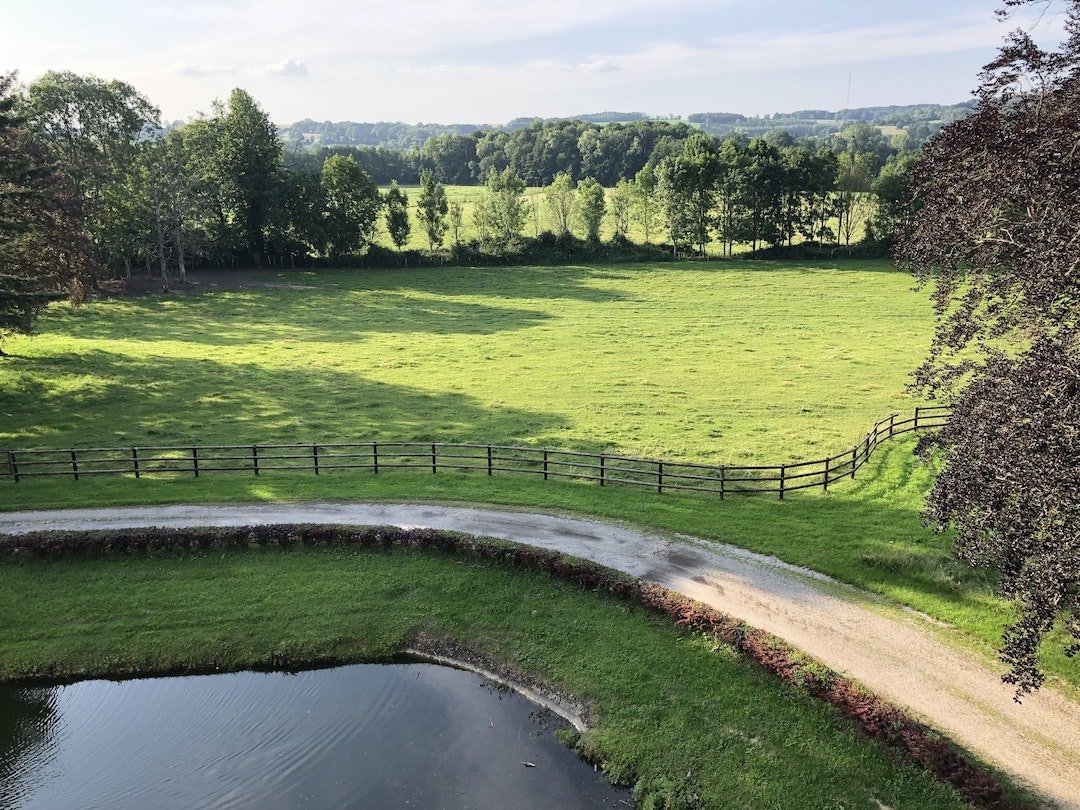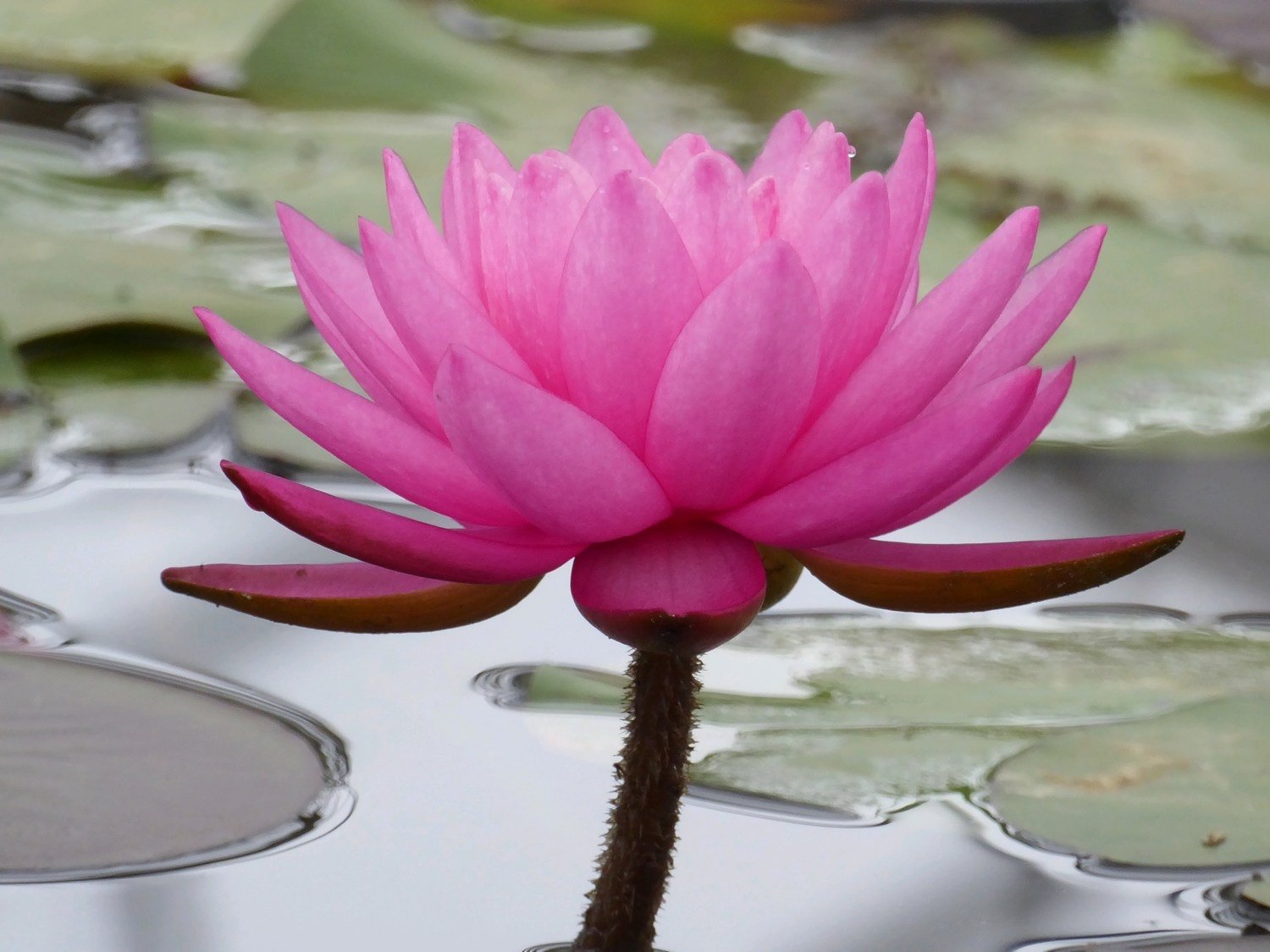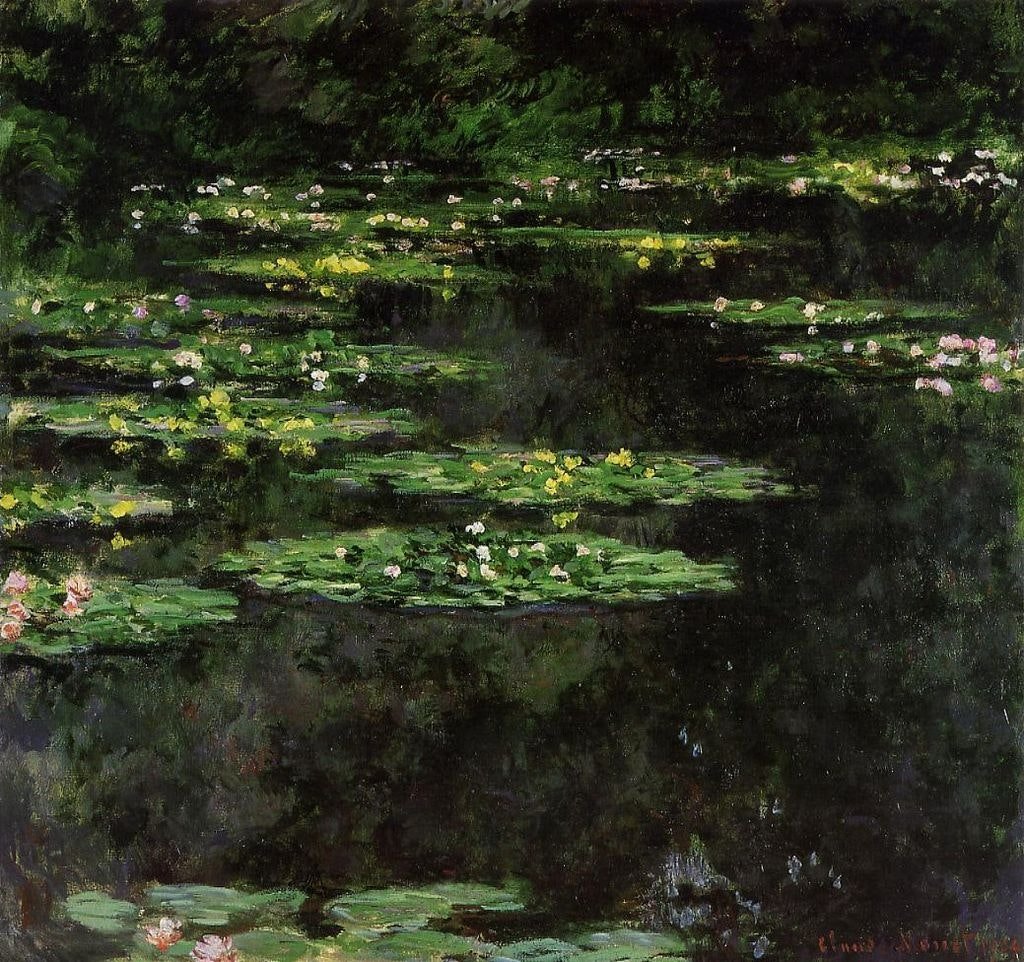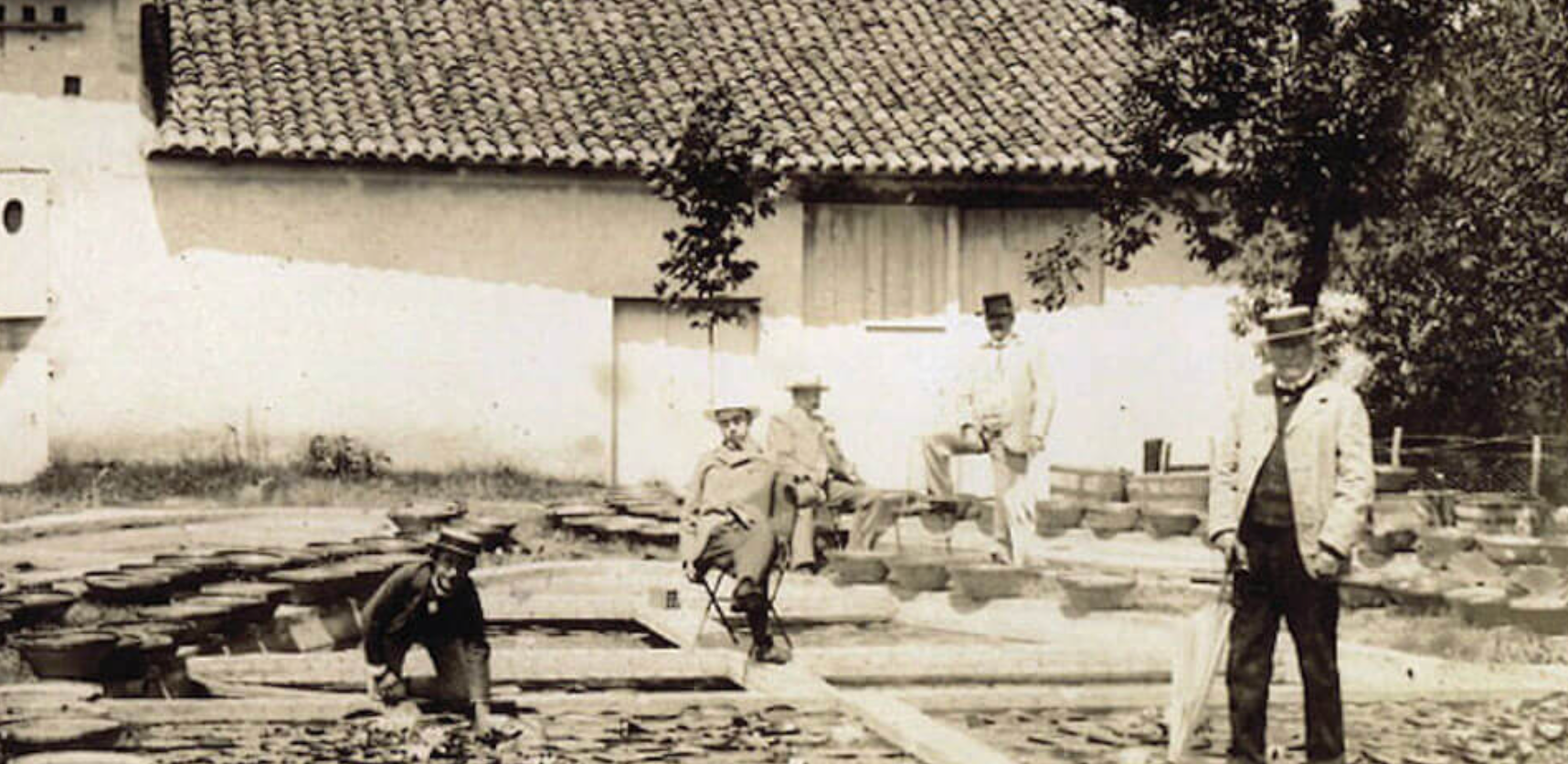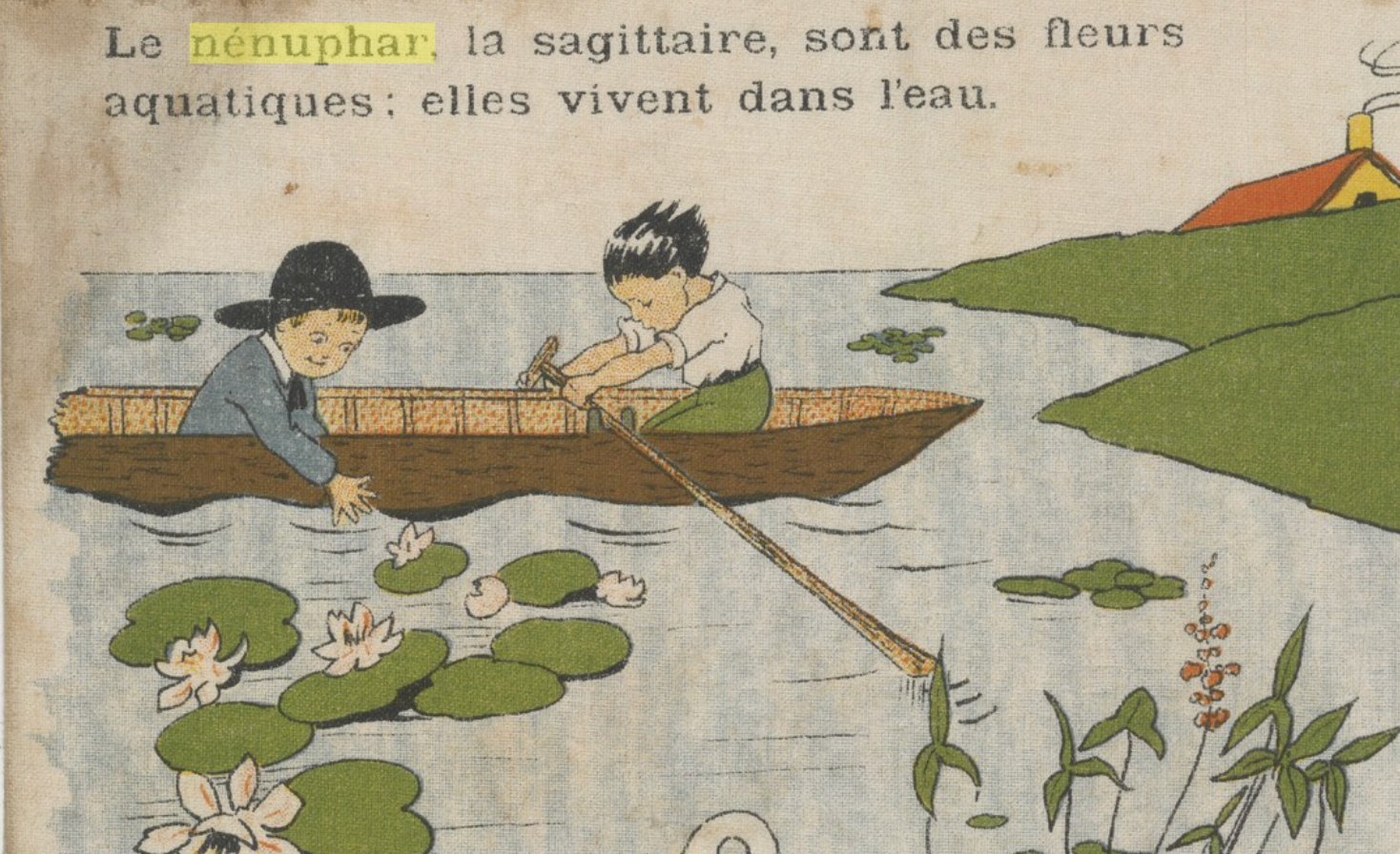Waterlilies in the moat
Today's Letter is about planting Waterlilies in the moat🌸 a new project, inspired by a remarkable botanist and Monet...
The view from the rear facade of Chateau de Courtomer, overlooking the “bassin,” part of the medieval moat. Here, we will be planting waterlilies next week.
Chère amie, cher ami,
We had a delivery at Courtomer, reported Monsieur Xavier, the whisper of amusement crackling over the phone line.
“Quel évènement!”
Yes, there was excitement at the Chateau last week. Monsieur Martyn, our gardener, received les nymphéas. There were four of them, hybrid waterlilies guaranteed to withstand our Norman winter despite origins as far-flung as Thailand.
We are taking first tentative steps towards planting a waterscape –as the Impressionist painter Claude Monet called it – in the bassin behind the Chateau…part of the old medieval moat system that once protected the property.
Monsieur Martyn will be away until Monday. Fortunately, the waterlily tolerates neglect with the assurance of a plant that has flourished unchanged since the days when dinosaurs roamed the earth…and presumably ate them.
N. ‘Mayla’ from Latour-Marliac, soon to be blooming in the moat at Chateau de Courtomer
Fossils and a genetic study published two years ago show that the waterlily was one of the first flowering plants in existence. It appeared 147 to 185 million years ago during the Jurassic period. It seems to have been the earliest example of a plant using floral scent and bright-colored petals to attract pollinating insects.
“Water Lilies are blessed with a surprising vitality, which allows them to live for quite a long time out of the water, and, in consequence, to survive very long voyages without being any the worse,” commented the world’s most famous waterlily breeder, while addressing the Royal Horticultural Society in London in 1898.
“For example,” continued Monsieur Latour-Marliac, who spoke excellent English, “in 1889 I sent to the Universal Exhibition at Paris a collection of my hybrids in a case, which was lost on the railway, and which could not be found for over a month. I was then obliged to replace this first instalment.
“Sometime afterwards I received a memorandum informing me that the package had been found...Feeling certain that the plants would be dead, I ordered them to be sent back by slow train, but on their arrival I was astonished to see them in good order, pushing shoots and very little the worse for being so long boxed up.”
One of the spectators at the Paris Exhibition of 1889 was Claude Monet. Inspired, he built his own waterlily pond at Giverny. Five years later, he placed his first order with Latour-Marliac. And he painted his first waterlily in 1896 as it floated near “le pont japonais,” the footbridge spanning his bassin. For the rest of his life, Monet returned again and again to the “nymphéa” culminating in a monumental series, Les Nymphéas, which fills two elliptical galleries in the Musée de l’Orangerie in Paris.
With a sense of due reverence, we placed our order with the same company.
Monet’s “Nymphéas” of 1904, year when he placed another order chez Latour-Marliac, at the Musée d’art moderne, Le Havre in Normandy.
After passing from the founder to his daughter and grandson, Latour-Marliac is still based in Le Temple-au-Lot near Bordeaux. This remarkable part of le patrimoine français, like other delectable pieces of French heritage, is now owned by an American, having passed through the hands of a devoted English couple who restored the ponds and plantings in the 1990s.
Joseph Bory Latour-Marliac began his experiments with waterlilies in the venerable tradition of the 19th-century gentleman scientist.
Returning home from studies in Paris at the age of 18 in 1848, he supervised his family’s plum orchards and extensive agricultural estates near Bordeaux. But he also built a large greenhouse and collected tropical plants. The commercial nursery he started in the 1870s financed his interest in collecting and hybridizing. And his products found a ready market.
Not only specialists were planting exotic gardens in Belle Epoque France.
Starting in the glory days of the 1860s, industrialization had made France rich. Ordinary people, not just aristocrats and la grande bourgeoisie, had money to spend on improving their homes and on leisure pursuits. Trade expanded around the globe, as did France’s overseas colonial empire. And the prevalent liberal outlook – positive, confident, open to novelty – encouraged a fascination with the wide and far away world of places like the Amazon jungles and the Far East.
Waterlilies corresponded to all of it – the desire to uplift and embellish one’s everyday existence…and to partake of an exotic and hitherto unattainable world. The new hybrids made it practical, too. While their blooms were as bright and bold as those floating around an Indian temple, they could survive a winter under ice.
Latour-Marliac was not the first creator of a cross between a tropical waterlily and the hardy native species of Europe and Western Asia.
Joseph Latour-Marliac, his gardeners, ponds, and waterlilies circa 1875.
Passionate amateur botanists had been intrigued by tropical waterlilies since the early days of European exploration. But it was not until the 1800s that technological advances -- glasshouses and heated tanks – allowed imported tropical plants to flourish in chilly northern climes.
Joseph Paxton, head gardener to the fabulously wealthy Duke of Devonshire in England, was the first person in Europe to coax a bloom from the Amazonian waterlily, Victoria. His exploit amazed the botanical and cultivated world; Queen Victoria herself came to see it. A couple of years later, in 1851, Paxton announced the creation of the first waterlily cross, N. ‘Devoniensis’. It was small, red, and looked exactly like an Indian waterlily called N. rubra. It attracted scant interest.
But Paxton’s assistant, Eduard Ortgies, who had been the caretaker of the Duke’s marvelous Victoria, then went to work for another famous plantsman, Louis Van Houtte. Like Latour-Marliac, Van Houtte was a botanist à ses heures – in his leisure. His day job was as Belgium’s minister of finance.
The first true hybrid waterlily was made in Van Houtte’s nursery. N. 'Ortgiesiano-rubra' was carried back to England and triumphantly exhibited to fellow afficionados in 1852. Like its parent plants, this was a tropical night-bloomer and could only live in a heated tank. And Ortgies and Van Houtte never succeeded in making another hybrid waterlily.
Their careful notes and technique, however, were now public knowledge. Jules-Emile Planchon, who had recently come from France to teach at Belgium’s Institute of Horticulture, wrote up the hybridizing experiment. It was published in Van Houtte’s multi-volume and widely disseminated opus, “Flowers of the Greenhouses and Gardens of Europe.”
Planchon’s interest in waterlily crosses was momentary. He returned to France and became famous as the botanist who identified and solved the phylloxera disaster. Phylloxera, a fly, infested and destroyed Europe’s vineyards and wine industry from the 1870s until Planchon himself introduced resistant vines from North America to use as grafts for the old varieties.
Meanwhile, Latour-Marliac, working away in his home laboratory, exchanging seeds and plants with other gardeners, reading papers by Planchon and others, became the world’s most successful hybridizer of waterlilies. Crossing the hardy white European waterlily with wild varieties from the Americas and Asia, he created stable, commercially-viable varieties of day-flowering, cold-resistant plants with large, fragrant, colorful flowers.
Monet wasn’t his only customer…the Marliac waterlilies enchanted the public.
“L'eau est un royaume dont cette superbe fleur est la reine, que dis-je, la divinité !”
“Water is a kingdom of which this superb flower is the queen…what am I saying? The goddess!” enthused Gustave Fraipont in 1896, author of one of the increasingly popular genre of gardening and flower-arranging guides.
“Les Fleurs des champs” teaches children about the “nénuphar,” another French name for the waterlily.
The Universal Exposition of 1889 in Paris, where Marliac first offered his hybrids for sale and Monet found inspiration that carried to end of his life, was attended by more than 32 million people. It was one of a series of world’s fairs that had begun with the London Exhibition of 1852, highlighting the wonders of progress and bringing together the public, specialists and goods from all over the world. This particular edition was planned to coincide with the centenary of the French Revolution of 1789.
In retrospect, the Exposition of 1889 was a glorious moment, unique in history, a celebration of the marvels France had achieved in the last hundred years.
The galerie des Machines was the largest metal building hitherto built…the palais des Industries was entirely lit by electricity… the théâtrephone let you listen to the opera across town. There was a palais des Beaux-Arts et des Arts libéraux, home decoration, arts and crafts, a reproduction of Angkor Wat and an African village, pavilions representing Argentina and Brazil, and a wildly popular show by Buffalo Bill and Annie Oakley. Sweeping up to the clouds, the Eiffel Tower crowned the ensemble.
Marliac’s participation in the 1889 universal exhibition was yet another example of French ingenuity, scientific acuity, and technological prowess. The private wealth that funded these pursuits was a benefit of the nation’s expansive economy. And his waterlily hybrids were further proof that France understood that beauty and domestic embellishment were worthy goals of science and human endeavor…All in all, Marliac took a first prize.
Marliac’s waterlilies may not have caught on because of these lofty observations and goals. But they did correspond to the tastes and artistic expression of his time. The waterlily twines and floats across ceramics, tapestries, jewelry, posters, all the decorative possibilities of l’Art Nouveau from the 1890s through the early 1900s. And, through the paintings of Monet, the waterlily crossed the chasm of 1914 into the modern age…
That is a longer story…more about Monet, 1914 and the waterlily project in next week’s Letter.
A bientôt au Chateau,
Elisabeth
www.chateaudecourtomer.com
info@chateaudecourtomer.com
In the Musée Marmottan in Paris, Monet’s Waterlilies, painted in 1903
P.S. As you may know, Monet’s house and gardens at Giverny are just an hour from the Chateau de Courtomer. The gardens of the Clos Normand, near the house, and the Water Gardens reopened last week.
The ample, manageably small Musée des impressionismes currently features “Monet/Rothko,” the color-field abstactionist. The museum hosts concerts (“Cuivres russes” this Sunday) and a family painting class on Saturdays in April. There will be an Easter egg hunt on Sunday, April 17th! Learn more at https://www.mdig.fr
Chateau de Courtomer is glad to welcome you and your guests for a family holiday, reunion of friends, or for a special event…a wedding, birthday, anniversary or retreat.

